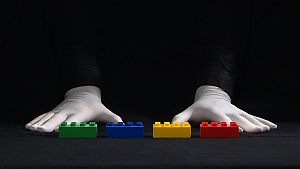Under the heading of “More Efficient – More Sustainable – More Effective”, the Hanover Fair will open its gates from April 19 to 23. The main activity presented at the KIT booth (hall 2, booth C 18) is Celitement, a novel “green” cement. Thanks to its energy-efficient production process it has an enormous potential for improving the worldwide energy and climate balance. In the Night of Innovations on Monday, April 19, 17.15 hrs, hall 2, KIT President Professor Eberhard Umbach will discuss innovations for future energy supply with the Minister President of Lower Saxony, Christian Wulff, and other representatives of politics and industry.
Topics Covered and Exhibits at the Central KIT Booth, Hall 2 (Research & Technology), Booth C18: All over the world, scientists are looking for new methods to improve energy and ecological balances of cement production. Today, cement plants are emitting more than 2 billion tons of the greenhouse gas carbon dioxide (CO2). Consequently, CO2 emission of cement production exceeds that of worldwide air traffic by a factor of 3 to 4. KIT scientists have now succeeded in developing a novel cement binder, called Celitement, which is comparable with Portland cement. It is based on so far unknown, hydraulically active calcium hydrosilicates. Compared to the production of ordinary Portland cement, production of Celitement will potentially reduce energy consumption and CO2 emission by up to 50% each. A film on the production of Celitement and samples of the new cement will be presented.
SmartRack: Increasing competitive pressure forces enterprises to reduce their inventories and processing times and guarantee best services at minimum costs. While large enterprises control their information flows with the help of ERP systems, small and medium-sized enterprises refrain from using these systems due to their high investment and installation costs. Advanced logistics concepts between small and medium-sized enterprises and their clients often fail due to lacking data integrity. The KIT SmartRack research project focuses on a sector-neutral rack system for the fully automatic acquisition of the inventory and its management by RFID. In this way, flows of information and goods can be controlled efficiently by enterprises.
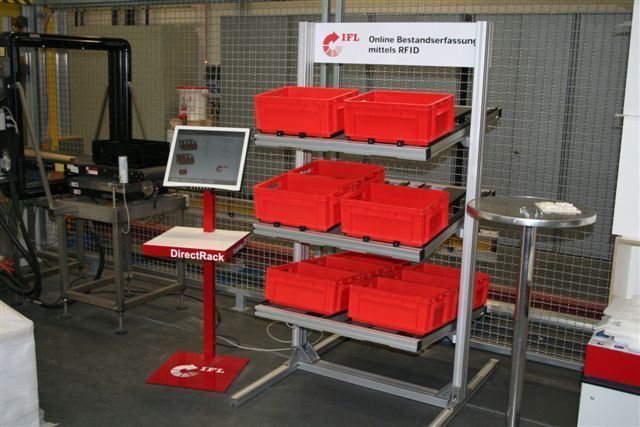
SmartRack (Photo: Viktoria Fitterer)
Technology Transfer, KIT Business Club, and Human Resources: To further enhance the innovative strength of KIT and associated companies, the KIT Business Club was founded. It aims at facilitating access to the potentials and contacts in the surroundings of KIT for the club members. At the Hanover Fair, the Business Club staff will inform about their work. License managers may be consulted on technology transfer matters. Staff of the Human Resources Service Unit will provide information about career and education options in the top research sector and latest vacancies.
Energy Quiz in the Science Year of Energy Live at the Central KIT Booth: During the Night of Innovations on April 19, the internet energy quiz of the Helmholtz Association designed for the Science Year of Energy will be presented live on a big screen with moderation. This quiz was coordinated and implemented by KIT and is part of the Federal Ministry’s of Education and Research initiative “The Future of Energy”. The energy quiz started on April 7 and can be played online for 160 days until September 14. Click
http://www.energie-quiz.de/2010/.
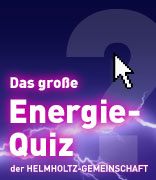
During the Hanover Fair, visitors are invited to play the energy quiz at the central KIT booth and the following locations: Hall 2, booth of the Helmholtz Association “Wunderkammer Wissenschaft” (Cabinet of Scientific Curiosities) and on the action area of the Tecto You Initiative in pavilion P33.
In addition, KIT will present the following topics at the Hanover Fair:
Hall 2 (Research & Technology), Booth E22 (Joint Booth of Vision 2050):
Fusion research at KIT is embedded in various international and European large-scale projects. ITER, a large facility for testing nuclear fusion technologies is presently being constructed in Southern France. To “ignite” a mix of hydrogen isotopes, a temperature of 100 million degrees is required. As on the sun, large amounts of energy are then released by fusion to helium. Heating is achieved with the help of high-performance gyrotron tubes, a type of microwave. The 140-gigahertz gyrotron developed by KIT reaches heating rates of up to 1 megawatt, this corresponds to more than 1000 kitchen microwaves. The model of a fusion reactor, a diamond window, and the film “Energy of the Future – Fusion 2050” will be presented to visitors.
Hall 2 (Research & Technology), Booth D34 (Joint Booth on Bionics):
How can components be optimized? The new “Method of Force Cones” developed at KIT allows for topology optimization without extensive use of computers. This facilitates lightweight construction. Visitors can test it on the functional model.
Hall 2 (Research & Technology), Booth C02 (“Wunderkammer Wissenschaft” of the Helmholtz Association of National Research Centers):
The travelling exhibition “Wunderkammer Wissenschaft” (Cabinet of Scientific Curiosities) of the Helmholtz Association invites visitors to enter the fascinating world of sciences with about 500 animated and animating pictures accompanied by acoustic effects. Using modern imaging methods, 16 “cabinets” provide insight into the work of the Helmholtz Centers. KIT activities covered are the KATRIN neutron scales, bioliq (fuel from straw), and GRID-KA (grid computing).
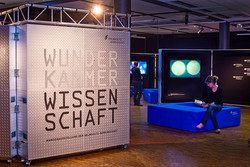
Experiencing science. (Photo: Ernst Fesseler, Helmholtz Assoication)
Hall 6 (MicroNanoTec), Booth H16 (Joint Booth of the IVAM Microtechnology Network):
The KIT NanoMicro Center operates the Karlsruhe Nano Micro Facility (KNMF) that comprises several large systems for users of nano- and microtechnologies. It is the objective of this scientific infrastructure facility to present the state of the art, to make it available to the users, and to further develop it.
Hall 13 (Energy), Booth D60 (Joint Booth of SuperConductingCity):
Superconducting materials for energy technology: Scientists of the Institute for Technical Physics have transferred the old cable stranding technology for alternating currents, called Roebel rod, to superconducting high-current cables with the help of some technical tricks. The superconducting demonstration cable is cooled in liquid nitrogen and has a cross-section of 30 square millimeters. It conducts 2600 amperes of direct current. A copper cable of the same performance would require a cross-section larger by a factor of 50 to 100. The new superconductor opens up entirely novel possibilities for future applications in transformers, generators, and motors.
Hall 13 (Energy), Booth C51 (Joint Booth of E-Energy):
Integration of electric vehicles as mobile current stores in the energy system via innovative information technologies is the major objective of MeRegioMobil. KIT is a major partner of this project funded by the Federal Ministry of Economics and Technology (BMWi) and will present this project at the BMWi booth. Presently, a “smart home” is being built on the KIT premises. It will integrate electric vehicles as current stores and consumers in the intelligent control of the household.
Hall 27 (Energy), Booth G60 (Joint Booth on Hydrogen + Fuel Cells):
At KIT, instruments are developed for the investigation and safety assessment of fuel carriers, such as liquid and gaseous hydrogen. Visitors can see a demonstrator that simulates real experiments with highly reactive hydrogen-air mixtures in pipelines.
Hall 27, Booth L03 (Agency for Renewable Resources):
Within the framework of the bioliq® project, a pilot plant for the production of synthesis fuels from biomass is being built at KIT. Biogenic and mainly dry residues from agriculture and forestry are refined to BTL (biomass to liquid) fuels and basic chemicals by thermochemical processes in several steps. Production of tailored biofuels marks the end of an integrated process chain. In the future, these biofuels are planned to replace part of the petroleum-based fuels. Visitors can have a look at the process model.
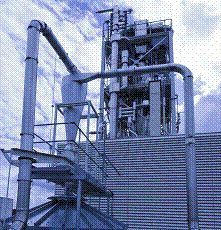
The bioliqÒ pilot plant at KIT (Photo: Markus Breig)
In close partnership with society, KIT develops solutions for urgent challenges – from climate change, energy transition and sustainable use of natural resources to artificial intelligence, sovereignty and an aging population. As The University in the Helmholtz Association, KIT unites scientific excellence from insight to application-driven research under one roof – and is thus in a unique position to drive this transformation. As a University of Excellence, KIT offers its more than 10,000 employees and 22,800 students outstanding opportunities to shape a sustainable and resilient future. KIT – Science for Impact.

